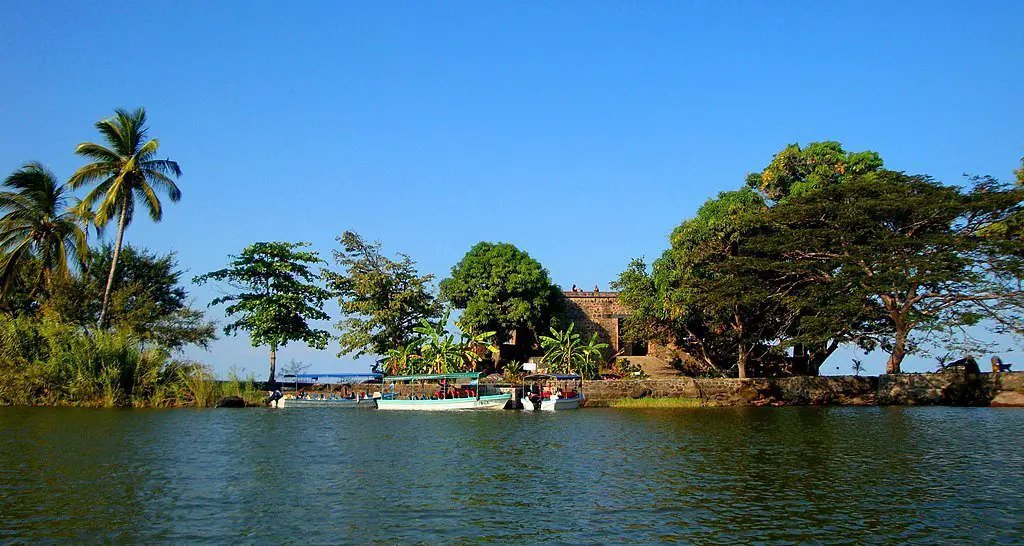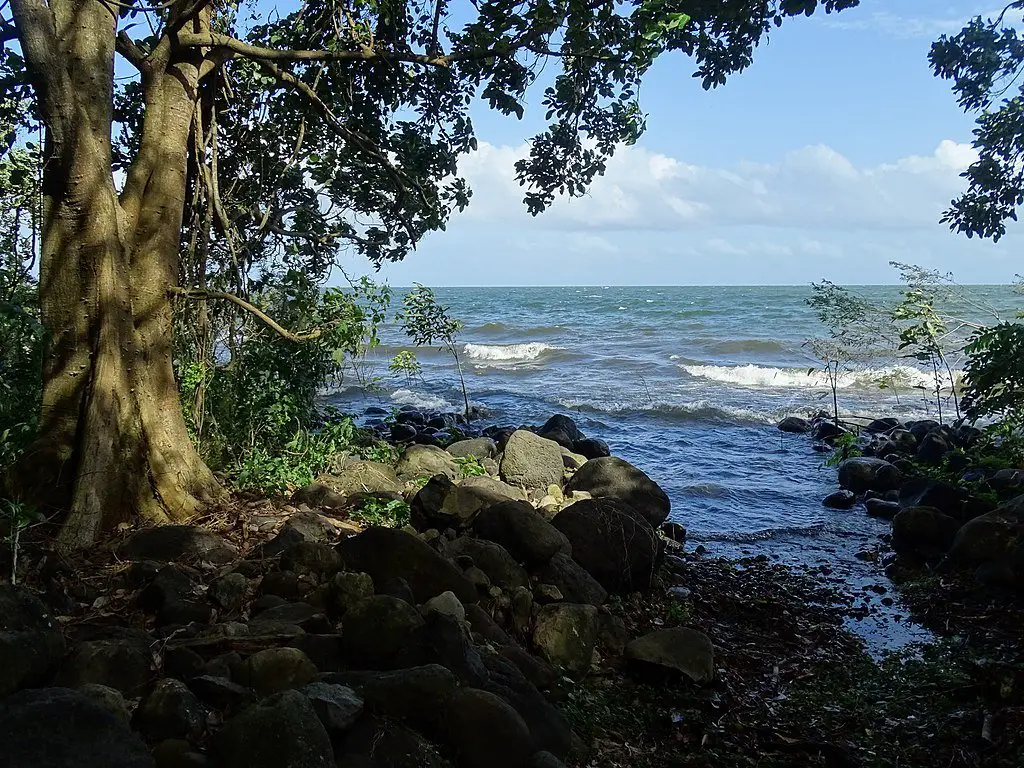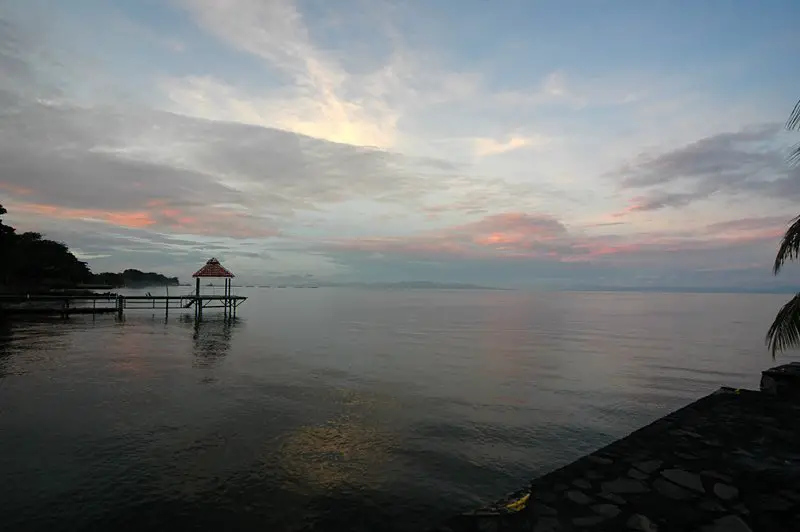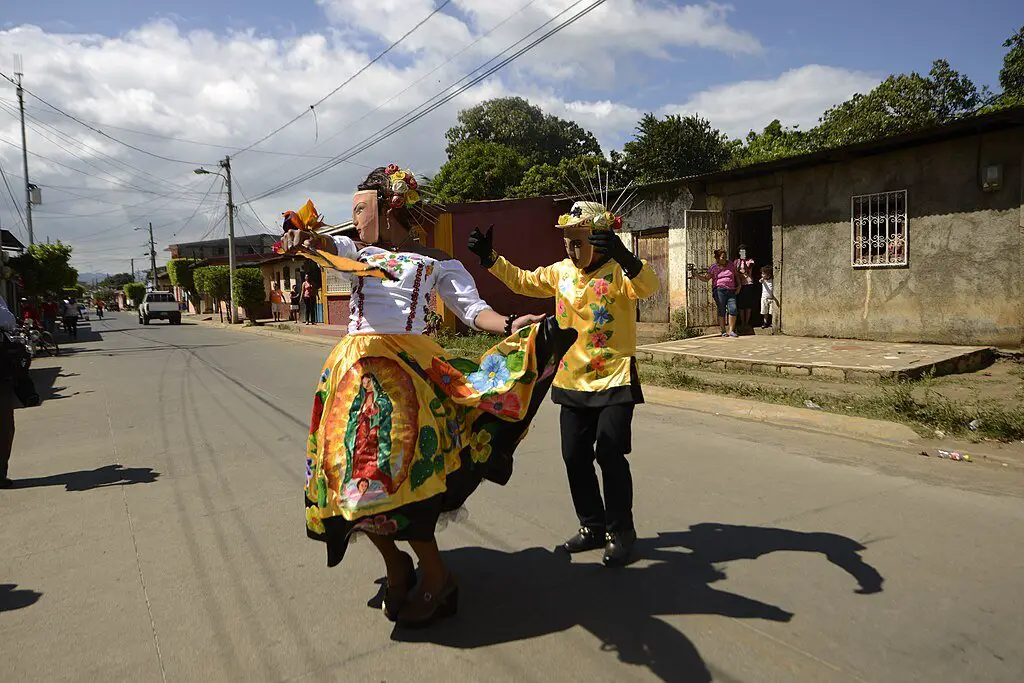Granada, one of the oldest and most beautiful cities in Nicaragua, serves as a captivating destination for visitors seeking to explore its rich history and vibrant culture. Founded in 1524, Granada has survived the passage of time, allowing it to emerge as a significant representation of Nicaragua’s colonial past. The city’s historical importance is apparent through its stunning architecture, characterized by vibrant facades and well-preserved colonial buildings that unlock stories of a bygone era.
The scenery of Granada is equally enchanting, with its position on the shores of Lake Nicaragua, the largest freshwater lake in Central America. This geographical advantage offers breathtaking views and a natural playground, attracting both nature enthusiasts and adventurers. The surrounding landscapes, dotted with lush greenery and volcanic formations, exhibit the stunning beauty that this region has to offer.
Granada’s cultural vibrancy is reflected in its lively street life and local traditions. The atmosphere is alive with colorful markets, delicious cuisine, and a fusion of Spanish, indigenous, and Afro-Caribbean influences that contribute to the city’s unique character. Festivals and events throughout the year showcase the music, dance, and art that are integral to the local identity. Whether wandering through the historical center, exploring the crafts in local markets, or indulging in local delicacies, visitors are immersed in an experience that is distinctly Nicaraguan.
Granada is more than just a landmark on the map of Nicaragua; it is a dynamic city where history and nature intertwine. As travelers delve deeper into its streets and the surrounding natural beauty, they discover a wealth of stories and experiences that enrich their understanding of this remarkable region.
Exploring the Colorful Streets of Granada
Granada, Nicaragua, is a city that captivates visitors with its vibrant atmosphere and rich history. The streets are adorned with bright colonial buildings, painted in hues of blue, yellow, and pink, creating a picturesque backdrop that is quintessentially Nicaraguan. As you stroll through these charming streets, the scent of local street food fills the air, with vendors selling traditional favorites such as “gallo pinto,” “quesillos,” and freshly made empanadas, inviting you to indulge in the local culinary delights.
The lively markets of Granada offer a treasure trove of local crafts and art. Here, you can find handmade pottery, vibrant textiles, and intricate wood carvings, each piece telling a story of the region’s culture and heritage. Engaging with local artisans provides an intimate glimpse into their craftsmanship, and many are eager to share their techniques and inspirations behind their creations. Observing artists at work in their studios or strolling through galleries provides an enriching experience that highlights Granada’s creative spirit.
To fully appreciate the city, consider embarking on a walking tour. Various local guides offer insightful tours, which often include key historical sites such as the breathtaking Granada Cathedral and the Central Park, a vibrant hub of activity. Additionally, visiting the nearby “Convento de San Francisco” reveals stunning architecture and a collection of pre-Columbian stone sculptures. For park enthusiasts, “Parque Colon” serves as a perfect spot to relax, where you can enjoy the lush greenery while interacting with friendly locals who are always eager to share their stories.
In essence, Granada’s colorful streets are not only visually stimulating but also rich in culture and history. When exploring this remarkable city, take the time to appreciate the art, interact with its welcoming inhabitants, and savor the local flavors that together create an unforgettable experience.
Colonial History and Architectural Wonders
Granada, Nicaragua boasts a rich tapestry of history that is intricately woven into its architecture. The city’s colonial roots are prominently reflected in its buildings, which exhibit a blend of Spanish colonial styles characterized by ornate facades, vibrant colors, and impressive stonework. As one of the oldest cities in the Americas, Granada’s historical influences can be traced back to its establishment in 1524 by the Spanish conquistador Francisco Hernández de Córdoba.
One of the most significant landmarks in Granada is the Granada Cathedral, a masterpiece that showcases neoclassical architecture with baroque undertones. The cathedral features a striking yellow exterior, imposing domes, and intricate stained-glass windows. Its construction began in 1786 and faced challenges such as fire and earthquakes but ultimately stands as a testament to the city’s resilience and dedication to preserving its heritage. This landmark not only serves as a place of worship but also symbolizes the religious and cultural history of Granada.
Another notable structure is the San Francisco Convent, which has undergone various transformations since it was first erected in the late 16th century. The convent now houses the Choco Museum, dedicated to educating visitors about the local cacao production and its historical significance in the region. The combination of historical architecture and modern adaptive reuse exemplifies how Granada honors its past while embracing contemporary culture.
Restoration efforts are ongoing in Granada, aimed at preserving the integrity of these architectural wonders while enhancing their functionality. Funded by both local initiatives and international cooperation, these projects not only maintain the city’s charm but also promote tourism, linking the allure of Granada’s stunning architecture with its fascinating history. The mindful preservation of these sites ensures that future generations can appreciate the undeniable beauty and significance of Granada’s colonial history.
Nature’s Embrace: Exploring Lake Nicaragua
Lake Nicaragua, extending over 108 square miles, is the largest freshwater lake in Central America and the 19th largest in the world. This vast body of water, often referred to as Cocibolca, plays a vital ecological role, serving as a habitat for diverse flora and fauna. The lake is predominantly freshwater, which is quite unusual given its geological history of being a part of the ocean millions of years ago.
The lake is renowned for its incredible biodiversity, home to species such as the endemic freshwater shark and an array of vibrant bird populations, including herons, egrets, and kingfishers. Additionally, it serves as a sanctuary for various fish species, underscoring its importance as a resource for both local fisheries and recreational anglers. Nature enthusiasts find Lake Nicaragua to be a paradise, offering opportunities for birdwatching, fishing, and kayaking amidst breathtaking scenery.
Surrounding the lake, a stunning landscape of volcanic mountains and lush tropical forests enhances its charm. The climate within this region is characterized by a warm tropical atmosphere, with the dry season typically extending from November to April, making it ideal for outdoor activities. Visitors can engage in hiking adventures in the nearby Volcán Mombacho, where sweeping views of the lake can be admired.
In addition to it being a freshwater source, Lake Nicaragua serves as a recreational hub for both tourists and locals. Opportunities for boating, swimming, and exploring small islands like the picturesque Isla de Ometepe enrich the experience, providing both excitement and tranquility amidst nature’s splendor. Its unique combination of ecological significance and recreational enjoyment truly makes Lake Nicaragua a remarkable destination for nature lovers and adventurers alike.
Kayaking Adventures on Lake Nicaragua
Lake Nicaragua, renowned for its vastness and beauty, offers a premier destination for kayaking enthusiasts. The serene waters and breathtaking scenery provide an ideal backdrop for both novice and experienced kayakers. For beginners, guided kayak tours are highly recommended, as they offer essential instruction and safety tips while navigating the waters. Various local operators provide equipment rentals, ensuring that novices have access to properly maintained kayaks and safety gear, such as life vests.
Experienced kayakers can explore the lake at their own pace, venturing towards the famed Isletas de Granada, a stunning archipelago formed by volcanic activity. These islands, which number over 360, are home to diverse wildlife, including numerous bird species, making them an excellent spot for nature enthusiasts. The calm waters surrounding the Isletas allow seasoned paddlers to challenge themselves by navigating around smaller islands or kayaking through the occasional narrow, winding passageways that provide a sense of adventure.
While kayaking, participants can immerse themselves in the breathtaking landscape, surrounded by lush greenery and vibrant wildlife. It’s a unique opportunity to witness the rich ecosystem up close, with the gentle rippling of the water often complementing the melodic sounds of various bird species. Furthermore, local guides enrich the experience by sharing insights into the ecological importance of the lake and the cultural significance of the surrounding areas.
Safety is paramount while engaging in water sports. Familiarizing oneself with the local weather conditions is crucial, as sudden storms are not uncommon. Additionally, ensuring that personal flotation devices are worn at all times and that kayakers stay within designated safe zones enhances the overall experience. In conclusion, kayaking on Lake Nicaragua, particularly around the scenic Isletas de Granada, offers captivating adventures filled with nature, tranquility, and excitement, making it a highlight of any visit to this enchanting region.
Island Tours: Discovering Hidden Gems
Lake Nicaragua, renowned for its striking beauty, offers an array of island tours that allow visitors to delve into the region’s unique treasures. The small islands scattered across this expansive lake present opportunities to discover hidden gems while experiencing the tranquil environment. Each island boasts its own character, featuring diverse wildlife and scenic landscapes that are often untouched by modern development.
While exploring these islands, visitors may encounter various forms of wildlife, such as monkeys, exotic birds, and diverse flora that thrive in the lush surroundings. The diverse ecosystems provide a delightful backdrop for bird watchers and nature enthusiasts alike, making the island tours a perfect activity for anyone seeking a deeper connection with nature.
Beyond the wonders of the natural realm, these island excursions also support local communities. Many tours are led by local guides eager to share their knowledge and culture, enhancing the experience further. Through interactions with local residents, visitors gain insight into traditional practices, artisanal crafts, and the daily lives of those who inhabit these small islands.
Activities on the islands can vary widely. Travelers may find opportunities for kayaking, snorkeling, or hiking nature trails that meander through dense vegetation. Some islands even offer the chance to learn about sustainable farming practices or partake in culinary classes featuring local ingredients. Each experience contributes to a sense of discovery, creating lasting memories that go beyond the typical travel itinerary.
Embarking on an island tour in Lake Nicaragua is more than just a glimpse into the picturesque scenery; it is an invitation to experience the region’s rich biodiversity and engage with the local community in a meaningful way. This multifaceted adventure underscores the unique value of the islands amid the backdrop of serenity that the lake offers.
Cultural Experiences: Festivals and Local Life
Granada, Nicaragua, is a city teeming with vibrant cultural experiences, particularly through its festivals and local life, which offer visitors a golden opportunity to immerse themselves in the nation’s rich heritage. Throughout the year, various festivals celebrate everything from religious devotion to local customs, showcasing the community’s spirit and traditions. The most notable events include the Festival de la Granada, which highlights the city’s historical legacy through parades, traditional music, and dance, providing a splendid display of local artistry and community cohesion.
One such festival, the Day of the Dead, offers a unique glimpse into Nicaraguan culture, wherein families gather to honor their deceased loved ones. The streets become adorned with colorful decorations, while traditional foods are prepared and shared among family and friends. This event fosters a sense of unity among locals and invites travelers to partake in the meaningful rituals that underscore the cultural values of remembrance and community solidarity.
In addition to festivals, Granada thrives with traditional music and dance, integral elements of Nicaraguan culture. Visitors can often witness spirited performances of folkloric dances, such as the Palo de Mayo, which reflect the country’s indigenous and Afro-Caribbean influences. Local theaters and cultural centers offer opportunities to learn about these artistic traditions through workshops and shows, enabling travelers to connect with the heart of Granada’s social fabric.
Moreover, engaging with locals during these festivities can enrich the travel experience, allowing visitors to learn customs firsthand. Markets and communal gatherings, often organized around these cultural events, provide ideal settings for meaningful interactions. By participating in these experiences, travelers not only enjoy the company’s warmth and hospitality but also gain insight into the customs and values that define this picturesque city.
Practical Tips for Traveling to Granada
Traveling to Granada, Nicaragua, offers visitors a unique blend of history, nature, and adventure. To facilitate a seamless trip, it is essential to consider several practical aspects. Firstly, the ideal time to visit Granada is during the dry season, which typically spans from November to April. During this period, the weather is pleasant, making outdoor exploration more enjoyable.
When it comes to accommodations, Granada provides a range of options that cater to different budgets. From luxury hotels to budget hostels, travelers can find suitable lodging throughout the city. Popular choices include Casa San Francisco and Hotel Plaza Colon, both known for their hospitality and proximity to local attractions. Booking ahead is advisable, particularly during peak travel months.
Getting around Granada is relatively easy and inexpensive. Walking is a great option to immerse oneself in the local culture, as many attractions are conveniently located within the city center. For longer distances, taxis and tuk-tuks provide quick and affordable transportation. It is advisable to agree on a fare before the journey to avoid misunderstandings. Additionally, renting a bicycle can be a fun and eco-friendly way to explore the scenic views along Lake Nicaragua.
Regarding travel safety, it is best to remain vigilant and follow basic precautions. Avoid displaying valuables in crowded areas and consult local advice about nighttime travel. Engaging with locals can provide invaluable insights into safe areas and etiquette.
Budgeting for your time in Granada requires consideration of food, activities, and souvenirs. Meals at local restaurants typically range from $5 to $15, while tours of historical sites or nature reserves can cost between $10 and $50. Souvenirs can vary in price, so it is recommended to explore local markets where bargaining is acceptable. Keeping cash on hand in small denominations also facilitates easier transactions.
Conclusion: Embrace the Magic of Granada
Granada, Nicaragua is a destination that effortlessly intertwines history, nature, and adventure, making it a memorable place for travelers seeking a unique experience. The city’s rich heritage is reflected in its colonial architecture, vibrant culture, and historical landmarks, allowing visitors to step back in time and appreciate the stories that have shaped Granada over the centuries. Each cobblestone street and colorful façade stands as a testament to the city’s resilient past, inviting exploration and admiration.
Beyond its historical allure, Granada is surrounded by stunning natural beauty. The impressive Mombacho Volcano and the serene Lake Nicaragua offer opportunities for outdoor activities that cater to both adventure enthusiasts and those seeking relaxation. Activities such as hiking, kayaking, and bird-watching allow individuals to connect with the tranquil environment while enjoying the diverse flora and fauna the region has to offer. The picturesque islands of Lake Nicaragua also provide a perfect backdrop for leisurely boat tours, giving travelers a chance to appreciate the stunning sunsets that paint the sky.
Moreover, Granada’s lively atmosphere, with its bustling markets and local cuisine, enriches the experience. The warmth of the locals, combined with the city’s vibrant arts scene, creates an inviting culture that encourages visitors to immerse themselves fully. This enchanting city’s fusion of history and nature provides an opportunity for new memories to be formed, deepening appreciation for Nicaragua’s rich beauty.
For those looking to explore a destination that offers both adventure and historical depth, Granada stands out as an exceptional choice. Planning a visit to this captivating city is a chance to experience the harmonious blend of elements that make Granada truly special. Embrace the magic of Granada, and prepare for a journey filled with discoveries and lasting impressions.










